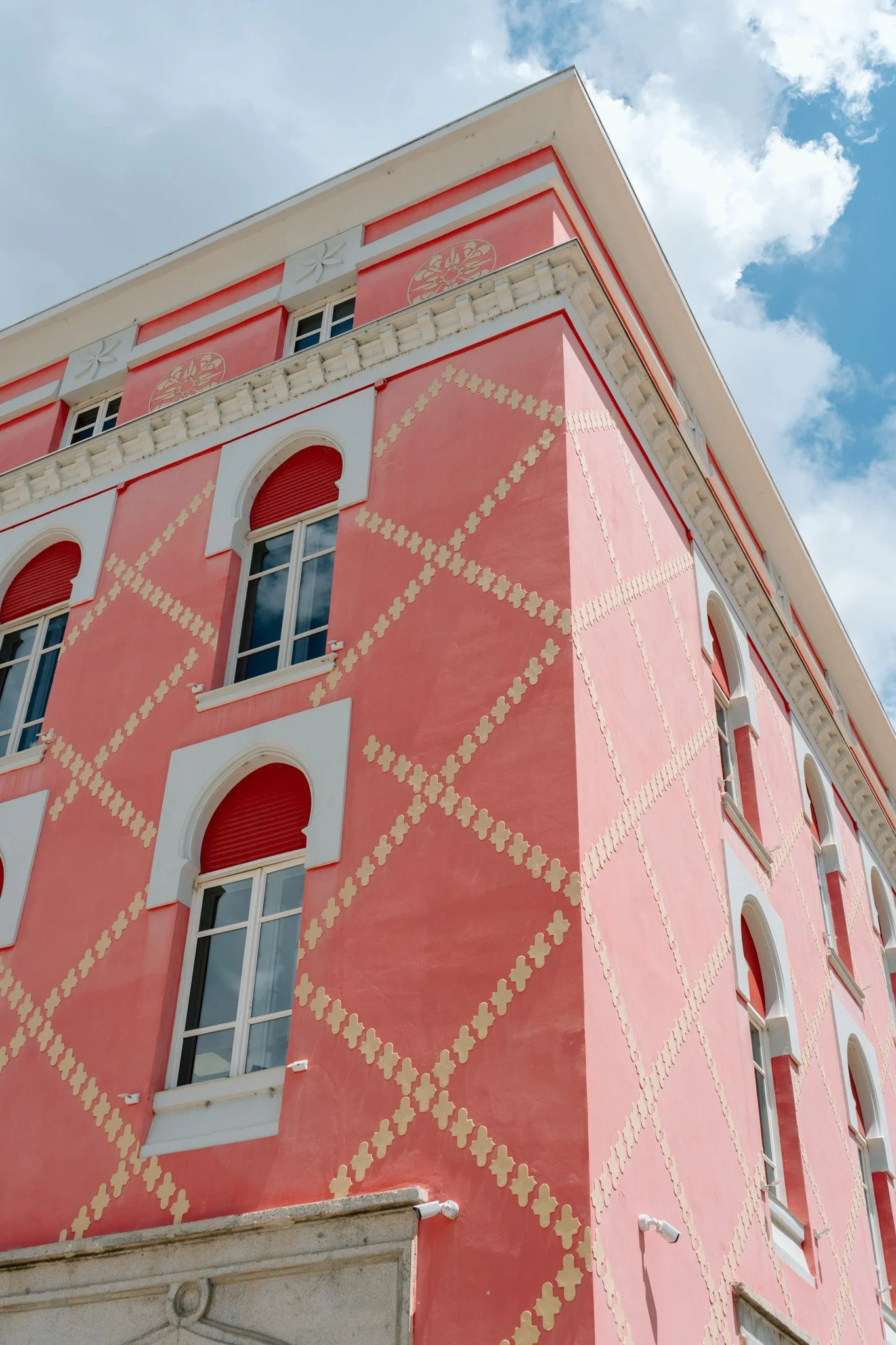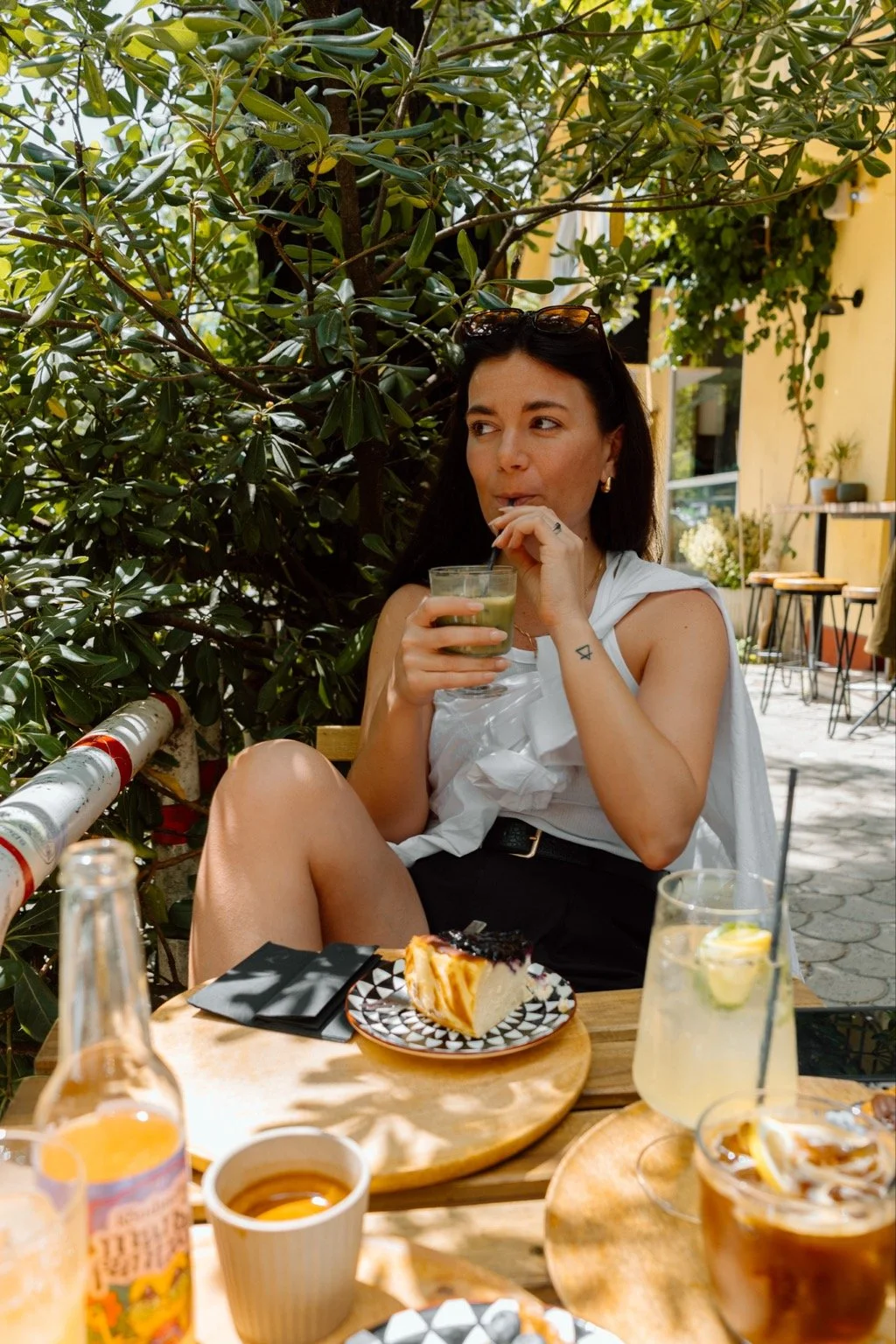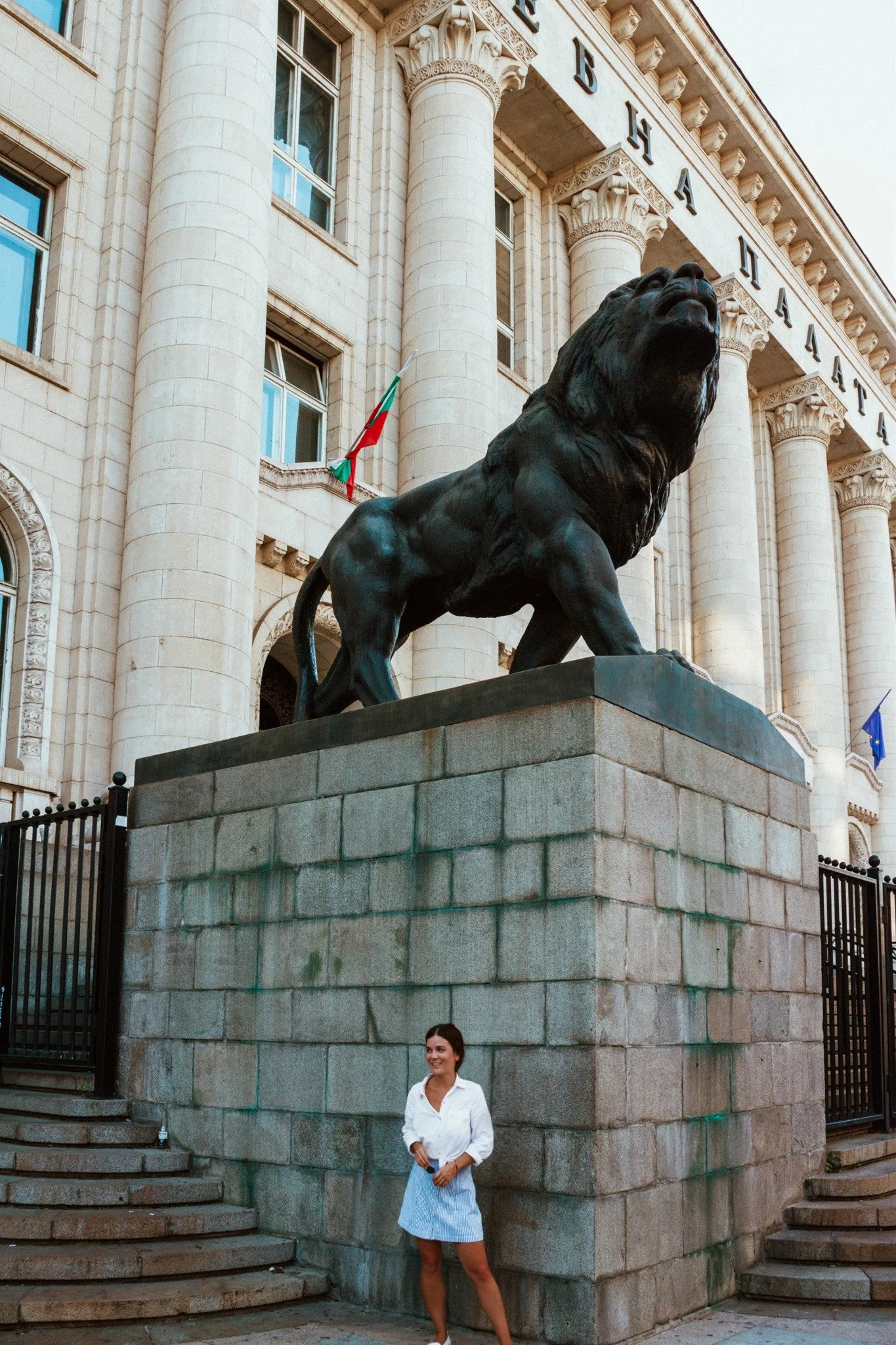Ultimate 3-Day Budapest Itinerary for First-Time Visitors
Looking for a 3-day Budapest itinerary that includes both the highlights + the hidden gems of the city? This Budapest itinerary has been curated so that you can make the most of every minute in Hungary’s capital.
Budapest is a city of stark contradictions, separated into two (Buda and Pest) by the Danube River but connected by the iconic Chain Bridge. Trendy ruin bars and neo-Baroque architecture. Colorful political murals on the walls outside of historic thermal baths. Like a phoenix that has literally risen from the ashes, Budapest has been continuously invaded throughout its tumultuous history, only to rebuild itself into the fairytale capital with it is today.
Over the last few years being based in Europe, I’ve found myself returning to Budapest as frequently as I can. The city’s opposing past and present, its grime and grandiosity, make it an endlessly fascinating destination for travelers. That’s why I’ve curated the ultimate 3-day Budapest itinerary.
when is the best time to visit Budapest ↴
Having visited Budapest in summer and autumn, I am firmly a fan of the latter. Shoulder season in Budapest, in my opinion, is when the city truly shines. Spring and autumn temperatures are more comfortable than in the summer and winter, and you don’t have the crowds to contend with.
Spring | The weather starts to warm in March, but its not uncommon for Budapest’s spring to see rain and snow. Average temperatures hover around 10°C/50°F. On the more extreme side, you’ll experience lows of 2°C /36°F.
Summer | Budapest summers are beautiful, albeit hot. Be sure to book accommodation with air-conditioning. On the high end, temperatures range from 30°C / 86°F to 35°C / 95°F. This is peak tourist season, however, so the city crowds add to the heat.
Autumn | Fall in Budapest is warm and quite lovely. You rarely need more than a light jacket, even into late October. Although it does rain, it rarely rains all day, making it possible to get out and explore without an umbrella at least some of the time.
Winter | Budapest winters are cold and dry. Travelers visiting budapest in the winter should expect daytime temperatures ranging anywhere from -10°C / 14°F to 10°C / 50°F.
getting to Budapest ↴
Budapest is serviced by Budapest Ferenc Liszt International Airport. Flights from Europe are relatively cheap thanks to budget airlines like Ryanair, EasyJet, and Wizz Air. I’ve flown with each of these three air carriers, and can attest that they are up to snuff, albeit lacking in extra amenities— you get what you pay for when flying.
Budget travelers heading to Budapest from inside Europe can also arrive via bus. I recommend FlixBus. Seats typically have charging ports and are comfortable enough for the journey.
how to get around Budapest ↴
Once you’re inside the city, most of the major landmarks and best bits are only short distances from one another. I think Budapest is best done on foot. If you don’t mind putting some miles on your shoes, walking around the city allows you to stumble upon hidden gems you might otherwise miss.
There are also public transport options available, including the metro system, buses, and trams. Tickets for transport can be purchased on the bus with cash, or at any metro station (cash and card accepted). Getting a transport card for the length of your stay is the best bang for your buck. It’s worth keeping the Budapest Card in mind. The Budapest Card provides access to the city’s public transportation and free entry to 19 of its best museums. You can purchase a card for 1-5 days, which is perfect for this 3-day itinerary.
where to stay in Budapest ↴
The city is divided into 23 distinct districts, the majority of which lie in Pest. It’s a larger city than you might think, but Budapest is very easy to get around, so where you choose to stay doesn’t matter too much.
best areas of Budapest to stay in
City Center (District V) | District V is home to a majority of Budapest’s best hotels. Staying here also keeps you centrally located near some of Budapest’s most iconic landmarks and attractions, including Hungarian Parliament and St. Stephen’s Basilica. District V also puts you near Fisherman’s Bastion and the famous Szechenyi Baths, both of which you have likely seen on your social feeds.
Jewish Quarter (District VII) | Like an unwritten rule, hip travelers stay in District VII, also known as the Jewish Quarter. Sleek restaurants, trendy cafés, and infamous ruin bars abound in this corner of Budapest, where gentrification has inarguably taken hold. Over time, it’s become an enclave of affordable accommodation that bachelor parties and other rowdy groups flock to. Because of this, many local residents have protested tourists in the area. Sensitive sleepers might prefer staying in a quieter part of the city. If you opt to stay in District VII, please be respectful of the people who call it home.
Joszefvaros (District VIII) | District VIII, referred to more informally as Joszefvaros, is spattered with boutique hotels housed in former palaces. Staying in this district of Budapest means you’re only a short walk from many of the city’s major landmarks and main attractions. Vintage shopping, hidden gem restaurants, and hipster bars make Joszefvaros a favorite amongst students and trendy travelers.
best hotels in Budapest
Flow Spaces | This bright, airy hostel is just steps from the Central Market Hall. You can find private rooms as well as dorms here, and there is a full kitchen and co-working space that make it ideal for solo travelers or remote workers.
Alice Hotel | The Alice Hotel is a beautiful 4-star hotel housed inside a villa from the 1800s. The pastel rooms include contemporary touches without losing the historic charm of the setting.
Anantara New York Palace Budapest Hotel | The Anantara New York Palace’s ground floor is home to New York Café, a notorious favorite amongst the literary elite. If you’ve visited the opulent café, you can imagine how extravagant the hotel itself is. Filled with frescoes, marble, and gold, the Anantara epitomizes the luxury of the era it was built in.
Matild Palace | This neo-Baroque hotel sits in the heart of the city, not far from Buda Foodie travelers will delight in Matild’s Michelin-listed restaurant.
Paris Udvar Hotel | Originally built as a department store in 1817, Paris Udvar fell into disrepair at the end of the 19th century. The hotel successfully blends old-school sophistication with modern comfort. In 2016, renovations began on the building to restore it to its former glory. Three years later, in 2019, the Paris Udvar Hotel was opened, paying homage to the history of the building with the elevated design of its interiors.
Kozmo Luxury Hotel Suites + Spa | For the ultimate luxury stay in Budapest, book a stay at Kozmo Luxury Hotel Suites + Spa. The chic interior is remarkably sleek. The Kozmo spa is like something out of a Bond film.
We also love using Booking.com to book the best places to stay around the world.
3-day Budapest Itinerary ↴
day 1: breakfast at Portobello Coffee, Széchenyi Chain Bridge, Buda Castle, Matthias Church, Ruszwurm Confectionary, Fisherman’s Bastion, Castle Hill + funicular, Hospital in the Rock Nuclear Bunker museum, dinner cruise on the Danube
Your first day in Budapest starts with brunch at Portobello Coffee. Portobello is one of the best brunch spots in the city, offering creative menu options in a bright, Scandinavian-type café. The coffee here is very good! I would recommend booking a table in advance to guarantee a seat and avoid a long wait.
From Portobello Coffee, it’s a 30-minute walk along the Danube River and across the Széchenyi Chain Bridge towards Buda Castle. Perched atop Castle Hill, Buda Castle is a magnificent historical and architectural marvel that offers a glimpse into the city’s regal past. Originally completed in 1265, Buda Castle has been rebuilt and restored numerous times. Today, it reflects a blend of Gothic, Baroque, and Renaissance architectural styles. As a UNESCO World Heritage site, the castle is not only a symbol of Hungary's royal heritage but also a vibrant cultural hub, housing the Hungarian National Gallery and the Budapest History Museum. Visitors can wander through its grand halls, explore the medieval courtyards, and enjoy panoramic views of the Danube River.
A short walk from Buda Castle sits the city’s oldest church. Ornate and refined, Matthias Church was originally built in 1015 but underwent extensive renovations throughout the 19th century. Gargoyles and spires adorn the outside of the Gothic church, but the inside is even more extravagant. Colorful frescoes and gold leaf decorate the walls. The history is equally impressive— two Hungarian kings were crowned inside the church. Don’t forget to purchase your tickets online to visit or at the kiosk outside of the church.
Need another coffee to keep you going? I suggest stopping by Ruszwurm Confectionary to enjoy a traditional Hungarian pastry and a pick-me-up coffee. This cake shop is over 200 years old! The pastries here are all baked fresh in-house. You’ll want to try the café’s famous “Ruszwurm Cake.” This is a creamy Hungarian pastry made with egg cream, vanilla, and whipped cream. It’s a true sweet treat and the sugar will help fuel your day-one adventures.
From the confectionary, walk (4 minutes) to Fisherman’s Bastion. No trip to Budapest would be complete without heading to its most iconic landmark, which also offers one of the city's prettiest views. Like something out of a fairytale, Fisherman’s Bastion has seven towers, which are said to symbolize the seven Maygar tribes that settled what we know today as Hungary. Perhaps the most impressive feature is the double stairway at the front— you’ll feel like Cinderella walking up the stone steps. Just make sure you don’t lose a shoe.
One of my top recommendations for Budapest is to take a dinner cruise along the Danube, which is exactly how I would finish off my first day in the city. I remember feeling on the fence about whether a dinner cruise would be worth it in Budapest, but I’m so glad we booked one. in the end, the dinner cruise along the river was one of the Budapest activities that stuck out most to us, though mainly because of the stunning views from the water.
day 2: Dorado café, Hungarian Opera House, St. Stephen’s Basilica, Hungarian Parliament Building, Shoes on the Danube Bank, Jewish Quarter (Budapestflow tour), ruin bars
Begin your second day in Budapest with breakfast at Dorado Café, my vote for the best coffee in Budapest. Here, you’ll find V60 pour-overs, barista-style coffee, and impeccable cold brew. I was basic and had a pour-over to accompany my avocado toast, but it exceeded my expectations.
Walk (10 minutes) from the café to the Hungarian Opera House. At the time of the opera house’s opening, in 1884, it was the third-largest opera building in the city. In the 1970s, the Hungarian government commissioned renovations for the opera house that began in 1980 and took four years to complete. It was reopened to much fanfare exactly 100 years since the day of its initial unveiling. The inside is filled with sculptures, oil paintings, and a grand marble staircase.
Today, you can take a guided tour of the building (available in six languages), though it’s also nice just to wander around the building’s exteriors. In my opinion, the house is best visited by attending a Hungarian Ballet Performance. Stories are told through elegant dancing, the gracefulness of which will leave you awestruck.
A short (12 minutes) walk from the Hungarian Opera House is St. Stephen’s Basilica, a true emblem of Budapest. Extravagant bordering on grandiose, St. Stephen’s Basilica is revered for housing the mummified hand of the first king of modern Hungary. The relic is so culturally significant that it’s paraded through the streets on St. Stephen’s Day. The Roman Catholic church is a remarkable example of neo-classical architecture, filled with frescoes and stained glass.
While the inside of St. Stephen’s is inarguably impressive, it’s the panoramic views from the church’s dome that it’s best known for. Climb up 302 stairs to the top and you’ll have views of Budapest sprawling below. The dome is equal in height to the aforementioned Hungarian Parliament building to symbolize that spiritual and worldly thinking are equally important. I recommend booking tickets for the dome ahead of your visit, especially if you’re visiting during the summer.
Dominating the east bank of the Danube is the mammoth Hungarian Parliament building. A true behemoth, it’s the third-largest assembly building in the world, sitting just behind the Parliament of Romania and the Congress of Argentina. The building’s construction began in the 1800s but wasn’t completed until 1904. The building has nearly 700 rooms with 28 entrances and almost 30 staircases. The parliament building’s size doesn’t overshadow its extravagance: giant granite columns, shiny stained-glass windows, and ornate details. Needless to say, it’s impressive. I went on the 1-hour tour of the Hungarian Parliament building, despite the relatively steep non-EU citizen entry fee.
Nearby the Parliament building is a poignant memorial to Hungary’s Jewish community that shouldn’t be missed: Shoes on the Danube Bank. At the end of 1940, Hungary joined the Axis forces in exchange for lost lands. Quickly, they realized they had made a mistake when they better understood the atrocities taking place at the hands of the Nazis. However, by 1944 Germany had invaded Hungary, and Jews were forcibly removed from their homes and sent to death camps. Before they were massacred, they were ordered to remove their shoes. Shoes on the Danube Bank was erected in 2005 with 60 iron pairs of shoes honoring the Jews whose shoes were left behind on the bank. It’s distressing but marks a significant part of Hungary’s history.
My favorite neighborhood in Budapest is the ultra-popular District VII, known more casually as the Jewish Quarter. Sprinkled with funky ruin bars, specialty cafés, and street art, the Jewish Quarter is a hip corner of the city. Unfortunately, the cool vibe has brought with it gentrification that many locals are unhappy about. Some believe this “hip-ification” of the Jewish Quarter may cause people to forget the area’s history. Others argue that the Jewish Quarter is returning to the lively neighborhood, filled with local businesses, that it was before the World Wars.
Jewish people settled in this part of Budapest in the late 18th century. At that time, Budapest was a rapidly growing city with plenty of economic opportunities. By 1867, Jews in Hungary gained full civil rights, which led to an even greater influx of Jewish immigrants. Within a few decades, an estimated 25% of Budapest’s population was Jewish. Jews began to mingle with Hungarian elites, until World War II. In 1944, Nazis turned the Jewish Quarter into a ghetto where Jews were sent to starve and freeze. The original ghetto walls still exist near Király and Dohány Street. As you wander around this part of Budapest, you’ll see several memorials dedicated to the Jewish community and the horrific loss of life.
One of the best ways to explore the Jewish Quarter and gain insight into how the area has changed over the years is by taking a tour with BudapestFlow. BudapestFlow offers tours of the Jewish district, street art in the area, alternative ruin pubs, and a Sunday morning tour that spotlights the best markets of the city.
Dohány Street Synagogue is the largest synagogue in Europe. If you are interested in the history of the Jewish district of Budapest, it’s worth spending the money since you get a guided tour included in the cost.
Once you get hungry, the Jewish Quarter has no shortage of eateries for dinner. I recommend trying the food at Karavan Street Food Market. I had incredible langos here, a traditional Hungarian dish made of deep-fried flatbread topped with sour cream, cheese, and other various slatherings.
All ruin bars are a good time. Travelers tend to frequent Szimpla Kert, the original ruin bar in Budapest, but it’s far from the only ruin bar in the city. After visiting a few with BudapestFlow, I also recommend Csendes Vintage Bar and UdvarRom.
day 3: breakfast at Franziska (pest location), Heroe’s Square, Vajdahunyad Castle, Szchenyi Thermal Pools, Central Market Hall, Gellert Hill
You’ve made it to your third and final day in Budapest (*cue tears*). I recommend starting your day with breakfast at Franziska. There are two Franziska locations in Budapest, but for the sake of this itinerary, start at the café on the Pest side of the city. Here, you’ll find breakfast burgers and smoothie bowls accompanied by delicious barista-style coffee.
Once you’re fueled for the morning, you can walk (30 minutes) to Heroes' Square, home to the Millennium Monument and the Museum of Fine Arts.
It’s a short 7-minute walk from Heroe’s Square to Vajdahunyad Castle, a copy of Romania’s Hunyad Castle (also known as Corvin Castle). Budapest’s version was built in 1896 to celebrate 1,000 years of Hungary since the Hungarian Conquest of the Carpathian Basin in 895. Touring the castle’s courtyard is free, but admission to the Museum of Agriculture housed within the castle does cost. I opted to forgo the museum, but it costs HUF 2,500 for those interested. Vajdahunyad Castle hosts a Christmas Market in December if you visit over the winter holiday season.
Szchenyi Thermal Pools is the largest in Budapest, and it has quickly become a tourist hotspot. The yellow complex offers relaxation in various indoor and outdoor baths, said to have many health benefits. Unfortunately, despite the most popular pool here being outdoors, it tends to be quite crowded during peak travel months. This is something locals are starting to get a bit irritated about. Instead of paying the steep price for these thermal baths, spread the economic boost with a visit to one of the city’s many other pools.
I recommend these thermal bath alternatives:
Gellért Thermal Bath | detailed further along in this post
Dandar Thermal Pools | No photos are allowed inside. This is so that everyone can enjoy their thermal bath in privacy and, honestly, it was a blessing. After stopping by the Szchenyi Thermal Pools, which were admittedly super cool, it was nice to relax and not be in the background of anyone’s photo-op.
Rudas Baths | A reflection of Budapest’s Ottoman-era history, Rudas is both visually and atmospherically different than most of the city’s other thermal pools. Its Turkish Room still maintains the original stones and foundations from when it was built in the 16th century. The best part? There is a roof jacuzzi with views of the Danube.
Central Market Hall is the largest indoor market in Budapest. Inside the neo-Gothic building are stalls selling produce, meats, and classic Hungarian cuisine. I tend to recommend visiting in the morning before hoards of tourists fill the hall, but for this 3-day Budapest itinerary, I think visiting in the afternoon for lunch works best. You could also grab some extra snacks for a sunset picnic at the top of Gellert Hill (where day 3 in Budapest finishes). Alternatively, you could grab lunch from one of the many eateries I’ve listed in the “Where to eat in Budapest” section of this itinerary (below).
For those who decide to skip Szchenyi Thermal Pools, head across the river to Gellért Thermal Bath after your Central Market stop. These opulent baths are as opulent as Szchenyi, albeit smaller. Gellért Bath reflects the colorful art nouveau era like a time capsule. Like Szchenyi, there are a combination of indoor and outdoor pools. However, unlike Szchenyi, the Gellért indoor baths are the most atmospheric, decorated with porcelain cherubs and dolphin fountains. There are still crowds here, but I feel like the ornate nature of the indoor baths makes it worth visiting.
The grand finale of your time in Budapest will have you swooning over the city forever. Walk up Gellert Hill during the golden evening hours of the day, and I promise the orange and pink hues fading over the city will stay with you forever. From Gellert Hill’s viewpoint, you can see the most famous landmarks in the city, including the Chain Bridge and the mammoth parliament building you toured on day 2 of this itinerary.
additional things to do with 3 days in Budapest ↴
Hospital in the Rock Nuclear Bunker Museum | This is an off-beat museum that reveals the history of a former emergency hospital and nuclear bunker.
House of Terror Museum | However, while the museum spotlights the harrowing history of Hungary during its two darkest periods, it might be a depressing note to start your day on. I still highly recommend visiting, and it is on your way to Heroe’s Square (the next stop on your itinerary), but you may want to save it for after you visit Vajdahunyad Castle.
Margaret Island (Margitsziget) | Just as London has Hyde Park, Budapest has Margaret Island, an idyllic green space once reserved as royal hunting grounds. The easiest way to get to the city oasis is via tram.
where to eat in Budapest ↴
You will not go hungry in Budapest! The city has a burgeoning food scene that will leave you spoilt for choice.
best Hungarian foods to try in Budapest
Langos | deep-fried flatbread smothered with cheese and other ingredients
Goulash | a typical stew often served in a bread bowl
Halászlé | famous fish stew with a paprika base
Töltött kaposzta | cabbage leaves stuffed with meat and rice, slathered in sour cream
best places to eat in Budapest
Dorado Café | When it comes to coffee and brunch in Budapest, none do it better than Dorado. The couple who run Dorado honed their espresso expertise in New Zealand, where coffee is taken most seriously.
Portobello Café | Portobello serves some of the best brunch in the city, accompanied by coffee that could compare to what you’d find in New Zealand and Australia.
Hétköznapok | A no-frills restaurant serving the best pizza in the city, open only during the week.
Mazel Tov | A casual dining experience in a bright, airy café.
Dobrumba | An unfussy Mediterranean eatery.
Hilda | Upscale sit-down establishment with a bohemian ambiance.
New York Café | The most iconic café in Budapest.
Vegan Street Food Garden | Vegan Garden is an outdoor space filled with food trucks serving various vegan treats.
socially-conscious eateries in Budapest
Nem Adom Fel | Nem Adom Fel is Hungary’s first café and restaurant operated by people with physical and intellectual disabilities. If you’re looking for a lunch bargain during the weekday, their two-course rotating menu is a steal.
Empathy Café + Bistro: the Hungarian Red Cross Hub | Run by the Hungarian Red Cross, Empathy Café serves fantastic coffee and yummy pastries. All proceeds go back to the Red Cross!
map ↴
Find everything you need for the ultimate travel guide to Budapest, Hungary on the map below.













































